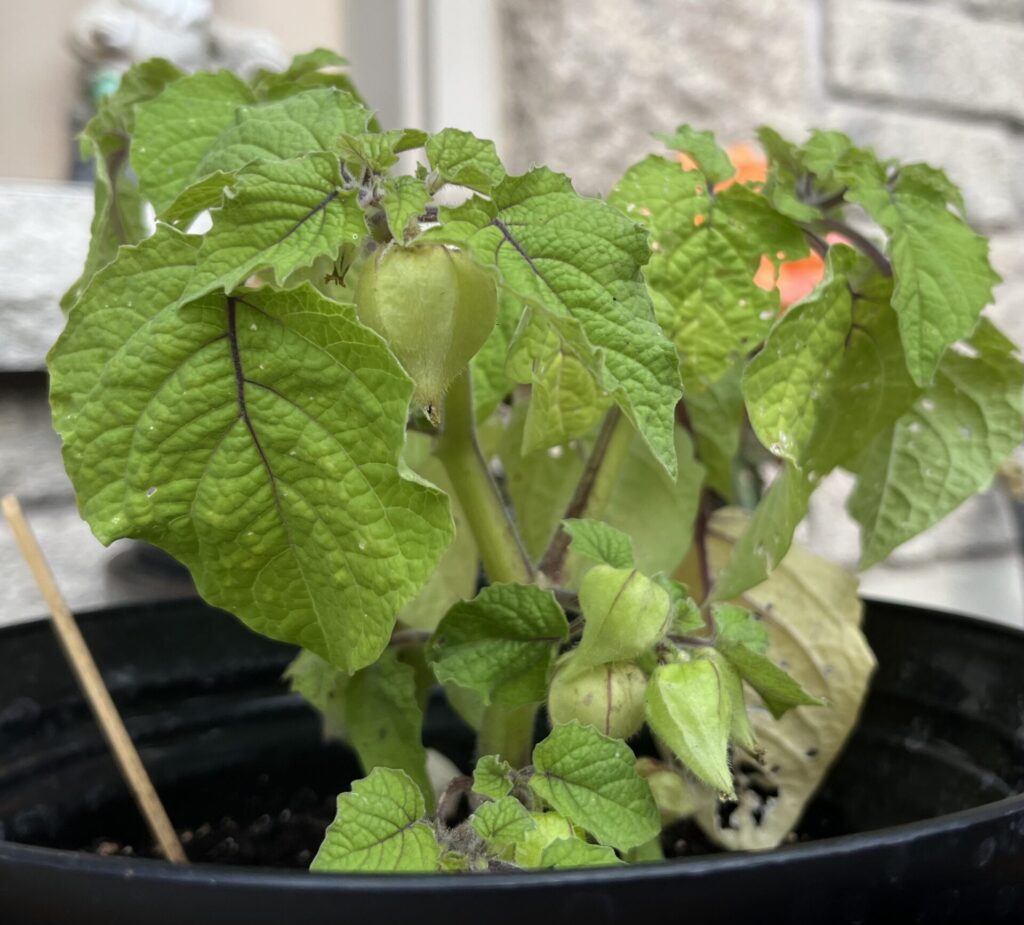
Hi there – I grew a reisentraube tomato this year for the first time, absolutely loved the fruit produced. My question is; can I overwinter it? It’s currently in a pot in the garden, but I assume I’d need to bring it inside? Any tips on preparation and care for the winter would be greatly appreciated!
Thank you for bringing this lovely plant to the attention of Toronto Master Gardeners.
I am not sure whether this will bother you or not, but I believe that you are growing tomatillo tomatoes, and not Riesentraube tomatoes (Lycopersicon lycopersicum).
The Riesentraube tomato is a lovely red cherry tomato, but it does not have the paper covering that I see in the photo you have enclosed. As described in the Seed Savers website, the Riesenstraube variety originated in Germany. Its name translates as “giant bunches of grapes.” It was introduced commercially in the U.S. in 1994 by Southern Exposure Seed Exchange. They are a high-yielding tomato plant, producing tasty 1″ cherry tomatoes that are borne on large sprays with a tiny point at the blossom end.
On the other hand, I believe that what you are growing is a tomatillo (Physalis philadelphica and Physalis ixocarpa), which is also known as the Mexican husk tomato, or Mexican groundcherry. Like tomatoes, it belongs to the nightshade family (Solanaceae). It produces a green tomato-like fruit that is used a lot in spicy salsa. I had a couple of these plants seed themselves spontaneously in my garden a couple of years ago. They are so pretty and the little paper-like husk covering makes them very unique. What is important to note is that they cannot self-germinate, and if you want fruit, you need at least a couple of plants. Maybe even more important, is that I have read (but only on one site) that the unripe fruit is poisonous.
Now to your question. Tomato plants in general can be overwintered as pot plants, but not easily. Their light requirements are very high, and even the brightest southern-facing window will not provide adequate either adequate light or for enough time each day. You will need an artificial grow-light for your plant, but those are very available. If you have a greenhouse, then your chances of success are significantly higher. Tomato plants can also succeed as cuttings since they root very easily. When you bring plants in from the outdoors, be very careful since they may be bringing in bugs with them which you will not enjoy.
Although the tomatillo can be grown as a perennial plant, it is usually considered difficult to overwinter since it requires a lot of heat and light. Even in Mexico, where they grow fields of the plant, it is treated as an annual. Moreover, since the seed is readily available, and it germinates very easily, why don’t you explore the excitement of starting your own seedlings in early March (under artificial lights).

